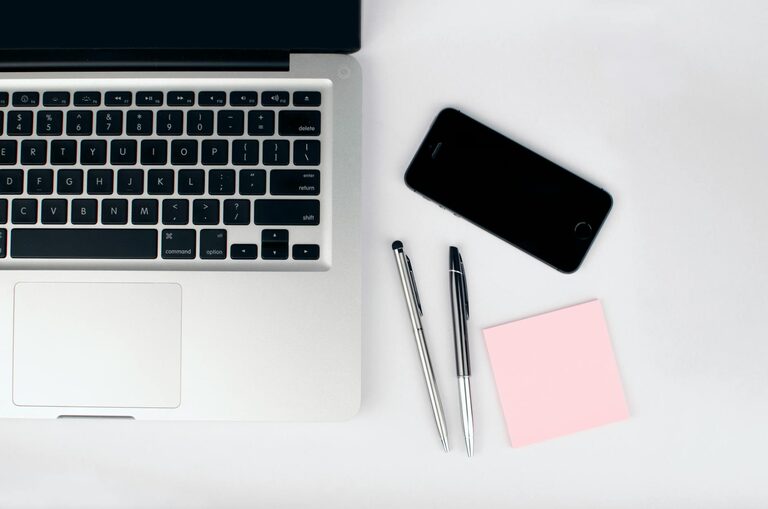
In today’s connected world, our digital lives can quickly become overwhelming. From overflowing inboxes to countless files scattered across devices, digital clutter can cause stress and reduce productivity. The good news? Decluttering your digital environment is doable, and the benefits include better focus, faster access to what you need, and a more enjoyable tech experience.
In this post, we’ll explore practical steps to help you declutter your digital life effectively. Whether you’re a student, professional, or casual user, these tips will simplify managing your digital space.
Why Declutter Your Digital Life?
Digital clutter isn’t just an annoyance; it can impact your wellbeing and efficiency. When your devices are disorganized, you may waste time searching for files or important messages. Keeping your digital world tidy also helps reduce mental fatigue.
Decluttering boosts:
– Productivity: Easier to find what you need
– Focus: Less distraction from notifications and clutter
– Security: Reduce risks by deleting old files and emails
– Device performance: Free up storage and improve speed
Ready to start? Let’s dive into the steps.
Step 1: Organize Your Files and Folders
One of the biggest sources of digital clutter is disorganized files. Here’s how to take control:
Create a Logical Folder Structure
Design a folder system that makes sense for your work and personal life. Examples include folders by:
– Project or client name
– Document type (invoices, photos, reports)
– Date or year
Avoid having too many subfolders to keep navigation simple.
Delete Unnecessary Files
Go through your downloads, desktop, and documents folders to remove:
– Duplicate files
– Outdated documents
– Temporary or installation files you no longer need
For photos and videos, consider deleting blurry or unwanted images.
Use Cloud Storage Wisely
Back up important files to cloud services (Google Drive, Dropbox, OneDrive) for easy access and added security. Keep only active files on your device to free up space.
Step 2: Manage Your Email Inbox
An overflowing inbox can be stressful and distracting. Here’s how to regain control:
Unsubscribe from Unwanted Newsletters
Use tools or manually unsubscribe from newsletters and promotional emails you no longer find useful.
Create Email Folders or Labels
Sort incoming messages into categories such as Work, Personal, Bills, or To-Do. This keeps your inbox clear and important messages easy to find.
Set up Filters
Most email services allow you to create rules that automatically move emails from certain senders or with keywords into folders or mark them as read.
Archive or Delete Old Emails
Keep your inbox trim by archiving emails you may want later and deleting those you definitely don’t.
Step 3: Streamline Your Apps and Devices
Too many apps and software can contribute to digital chaos.
Review and Delete Unused Apps
On your phone, tablet, or computer, remove apps you no longer use. This frees storage and reduces distractions.
Limit Notifications
Go through your app notifications and disable those that aren’t essential. Fewer alerts mean less interruption.
Update Software Regularly
Keep your apps and operating system updated for best performance and security.
Step 4: Organize Your Browser and Bookmarks
Web browsers can become cluttered with countless open tabs and bookmarks.
Close Unneeded Tabs and Windows
Make it a habit to close tabs you no longer need. Use tab managers or browser extensions if necessary.
Sort and Delete Bookmarks
Review your saved bookmarks. Delete outdated ones and organize the rest into folders for quick access.
Clear Browsing Data Periodically
Clearing cache, cookies, and history helps improve browser speed and protect privacy.
Step 5: Simplify Your Passwords and Security
Digital clutter isn’t just about files; it can involve your accounts too.
Use a Password Manager
Instead of juggling dozens of passwords, use a reliable password manager to store and generate secure passwords.
Review and Delete Old Accounts
Deactivate accounts you no longer use to reduce security risks.
Enable Two-Factor Authentication
Add an extra layer of security to important accounts whenever possible.
Step 6: Establish Healthy Digital Habits
To keep clutter at bay, regular maintenance is key.
– Set aside 10–15 minutes weekly to clean your inbox and desktop.
– Schedule monthly reviews of files and apps.
– Be mindful before downloading new apps or saving files.
– Use tools and apps designed for productivity and organization.
Final Thoughts
Decluttering your digital life takes a bit of time upfront but pays off in increased focus, efficiency, and peace of mind. By organizing files, managing emails, minimizing apps, and maintaining good digital habits, you’ll create a workspace that supports your goals.
Remember, digital decluttering is an ongoing process. Start small, be consistent, and enjoy a clearer, more productive digital space!
